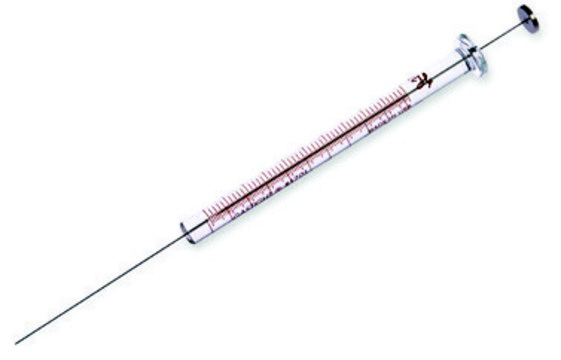24544
Hamilton® syringe, 800 series, cemented needle
805N, volume 50 μL, needle size 22s ga (bevel tip), needle L 51 mm (2 in.)
Sign Into View Organizational & Contract Pricing
All Photos(1)
About This Item
UNSPSC Code:
41122001
Recommended Products
material
stainless steel needle (point style 2)
needle size
22s ga (bevel tip)
description
Microliter™
feature
needle type N (cemented)
packaging
pkg of 1 ea
manufacturer/tradename
Hamilton 84856
needle L
51 mm (2 in.)
volume
50 μL
Looking for similar products? Visit Product Comparison Guide
General description
- Same quality performance as 700 series, with additional benefits
- The extended metal handle is removable and field repairable
- The plunger stem resists bending
- Accurate to within ±1% of the total volume
- Temperature limit: 50°C for cemented needles, 115°C for removable needle
Hamilton syringe is available in gas-tight type that minimizes the gas exchange in GC analysis. It gives accurate volume delivery. The plunger is mostly unsurpassed.
Application
It has been used in stripe assay to understand the attractive or repulsive activity of protein substrate fibronectin and leucine-rich transmembrane protein-2 (FLRT2) using dissociated Hippocampal neurons.
Legal Information
Hamilton is a registered trademark of Hamilton Co.
Microliter is a trademark of Hamilton Co.
Regulatory Information
新产品
Choose from one of the most recent versions:
Certificates of Analysis (COA)
Lot/Batch Number
Sorry, we don't have COAs for this product available online at this time.
If you need assistance, please contact Customer Support.
Already Own This Product?
Find documentation for the products that you have recently purchased in the Document Library.
Stripe Assay to Study the Attractive or Repulsive Activity of a Protein Substrate Using Dissociated Hippocampal Neurons
Yamagishi, Satoru, et al.
Journal of Visualized Experiments, 112, e54096-e54096 (2016)
In Vitro Fertilization and Embryo Transfer: A Manual of Basic Techniques, 06-Dec, 192-192 (2012)
Our team of scientists has experience in all areas of research including Life Science, Material Science, Chemical Synthesis, Chromatography, Analytical and many others.
Contact Technical Service






